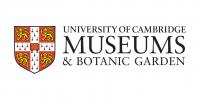Pictured: swallowtail, Papilio machaon
200-year trend in Cambridgeshire: Decline to local extinction.
Modern records
This entry from Jenyns is particularly interesting as it highlights how large numbers of this fenland butterfly used to exist in Cambridgeshire. The species is now locally extinct and it is thought that this is due to large areas of fen being drained to make space for farmland. This shows us how important museum collections are for documenting change and provides information that can be used to guide conservation efforts today. The Great Fen and Wicken Vision Projects are working to re-wet areas of fenland in the county. The swallowtail still exists on the broads of Norfolk, so if enough habitat is restored here it may be able to come back and live in Cambridgeshire. However, a major hurdle would be providing enough of its foodplant, milk parsley, which would require extra expansion of flower – rich calcareous fenland.
Occasional specimens of the continental race of the swallowtail butterfly are recorded in Britain, when they fly over the channel, including some recent recordings in Cambridgeshire. This race is less constrained by habitat and foodplant, being able to feed on common umbellifers such as wild carrot, but possibly requires a warmer climate.
National records map
Swallowtail national records map: https://species.nbnatlas.org/species/NBNSYS0000005514
scarce swallowtail, Iphiclides podalirius
Notes from Jenyns: This must be considered as a very doubtful native of Cambridgeshire. ~ Reported to have been taken in the time of Berkenhout, & the specimen to have passed into his possession. ~ See Haworth’s Lepidoptera Britannica, Preface ~ p. XXVII. ~ A single individual was also supposed to have been seen on wing by J. C. Dale, Esq. near Eltisley Bar ~ July 9th, 1818. ~
200-year trend in Cambridgeshire: Little change.
Modern records
This species is an extremely rare visitor to the UK, with sightings possibly resulting from the introduction of its eggs or larvae during plant sales. As Jenyns notes, the likelihood of seeing the species in historical Cambridgeshire was extremely remote. This is the same as it is today, with the scarce swallowtail having only been reliably recorded in the UK on less than a dozen occasions.
National records map
Scarce swallowtail national records map: https://species.nbnatlas.org/species/NHMSYS0000502952





